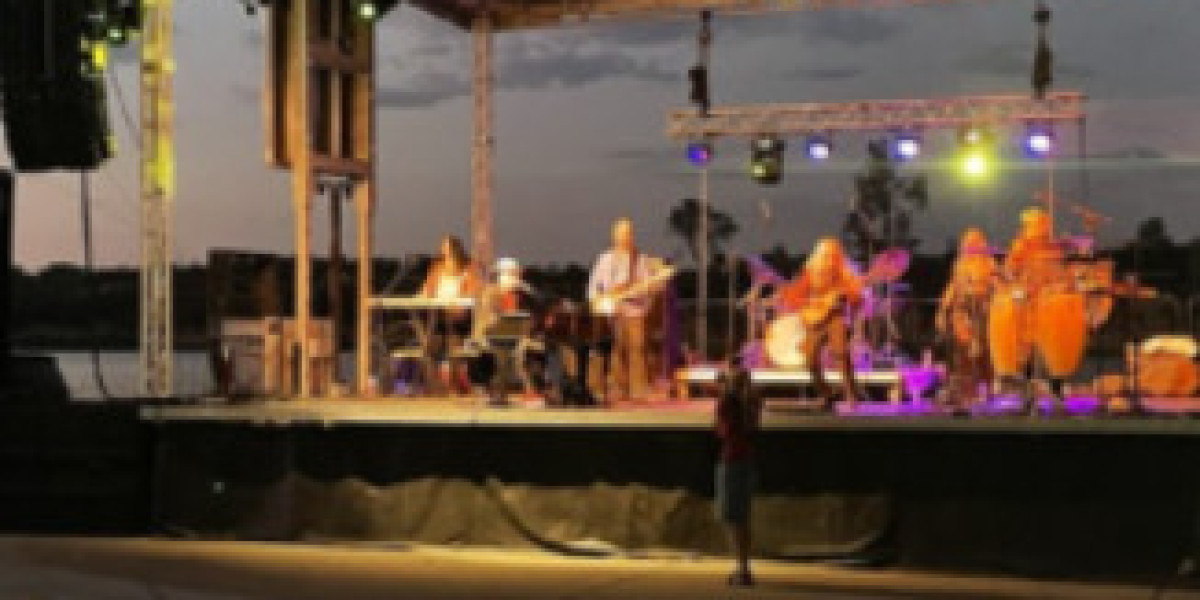In the realm of event planning, the ambiance plays a critical role in shaping the attendees' experience. While décor, music, and venue selection are often prioritized, the importance of event lighting cannot be overstated. Proper lighting transforms a space, setting the mood, directing attention, and enhancing the overall atmosphere. This blog delves into the multifaceted world of event lighting, exploring its significance, the different types of lighting, and practical tips for creating a memorable event.
The Significance of Event Lighting
Creating Atmosphere
Lighting is one of the most powerful tools in creating the desired ambiance for an event. Whether it’s a wedding, corporate event, or concert, the right lighting can evoke emotions, accentuate themes, and make the venue feel more inviting. For instance, warm, soft lighting creates an intimate, cozy environment perfect for weddings and social gatherings. In contrast, bright, colorful lights can energize a crowd at a concert or party.
Directing Attention
Strategic lighting can guide attendees' attention to specific areas or focal points within the venue. Spotlights, for example, can be used to highlight a speaker at a conference or the bride and groom at a wedding. Gobos (templates placed inside lights to project patterns or logos) can project branding elements or thematic patterns on walls and floors, reinforcing the event’s identity.
Enhancing Visuals
Good lighting enhances the visual appeal of an event. It highlights architectural features, decor elements, and even the guests themselves. Lighting can also improve the quality of photographs and videos taken during the event, which is crucial for memories and marketing purposes. A well-lit venue ensures that every important moment is captured beautifully.
Types of Event Lighting
Ambient Lighting
Ambient lighting, also known as general lighting, provides overall illumination to a space. It sets the foundation upon which other lighting elements are layered. Ambient lighting should be soft and evenly distributed to create a comfortable environment without harsh shadows or glare.
Task Lighting
Task lighting is used to illuminate specific areas where activities take place. For example, a stage at a conference or a buffet table at a banquet. It ensures that these areas are well-lit for functionality and safety, allowing guests to see clearly and perform tasks without strain.
Accent Lighting
Accent lighting is used to highlight particular features or areas within a venue. It’s often used to draw attention to décor elements, such as floral arrangements, art pieces, or architectural details. This type of lighting adds depth and dimension to the space, creating visual interest.
Decorative Lighting
Decorative lighting, as the name suggests, is used for aesthetic purposes. It includes chandeliers, string lights, and lanterns that add charm and character to the venue. Decorative lighting often serves as both a light source and a décor element, enhancing the overall theme and style of the event.
Mood Lighting
Mood lighting is designed to evoke specific emotions and set the tone for the event. It can be achieved using colored lights, dimmers, and dynamic lighting effects. For instance, a romantic dinner might feature soft, warm lighting, while a high-energy dance party could utilize vibrant, pulsating lights.
Intelligent Lighting
Intelligent or automated lighting systems allow for dynamic lighting effects that can be programmed to change in response to music, time, or specific triggers. These systems are commonly used in concerts, theater productions, and high-end corporate events to create immersive experiences.
Practical Tips for Effective Event Lighting
Understand the Event's Purpose and Theme
Before planning the lighting design, it’s crucial to understand the event's purpose and theme. A corporate gala will have different lighting needs compared to a casual outdoor party. Tailoring the lighting to match the event’s objectives ensures that the ambiance supports the desired atmosphere and activities.
Conduct a Site Visit
Visiting the venue beforehand allows you to assess the space, identify potential challenges, and plan the lighting layout more effectively. Take note of existing light sources, power outlets, and areas that require special attention. A site visit also helps in visualizing how different lighting elements will work together.
Layer Your Lighting
Effective lighting design often involves layering different types of lighting. Combining ambient, task, accent, and decorative lighting creates a rich, multi-dimensional environment. Each layer serves a specific purpose, contributing to the overall aesthetic and functionality of the event.
Use Lighting to Define Spaces
Lighting can be used to define different areas within a venue, creating distinct zones for various activities. For example, use softer lighting in lounging areas to promote relaxation, while brighter lights can highlight dining and dancing zones. This approach helps in organizing the space and guiding guests throughout the event.
Incorporate Color
Color plays a significant role in setting the mood and reinforcing the theme of an event. Colored lights can transform a plain venue into a vibrant, thematic space. Use color gels or LED lights to wash walls, ceilings, and floors with hues that match the event’s color scheme.
Control Intensity and Direction
Adjusting the intensity and direction of light is essential for creating the right atmosphere. Dimmers allow for flexibility, enabling you to change the mood throughout the event. Directing light towards specific areas helps in highlighting focal points and avoiding unwanted shadows.
Leverage Technology
Modern lighting technology offers endless possibilities for creating dynamic and immersive experiences. Intelligent lighting systems, wireless controls, and programmable LEDs allow for creative lighting designs that can change in real-time. Leveraging these technologies can elevate the overall production value of the event.
Work with Professionals
Hiring a professional lighting designer or a lighting rental company can make a significant difference in the quality of your event lighting. Professionals bring expertise, equipment, and creative ideas that ensure your vision is executed flawlessly. They can also handle technical aspects, allowing you to focus on other event details.
Conclusion
Event lighting is a crucial element that significantly impacts the success and memorability of any gathering. From creating the right atmosphere to highlighting key areas and enhancing visual appeal, thoughtful lighting design can transform a simple venue into a spectacular experience. By understanding the different types of lighting and employing practical tips, event planners can craft unforgettable events that leave a lasting impression on attendees. Whether you’re planning a wedding, a corporate event, or a concert, investing in quality lighting is an investment in the overall success of your event.









